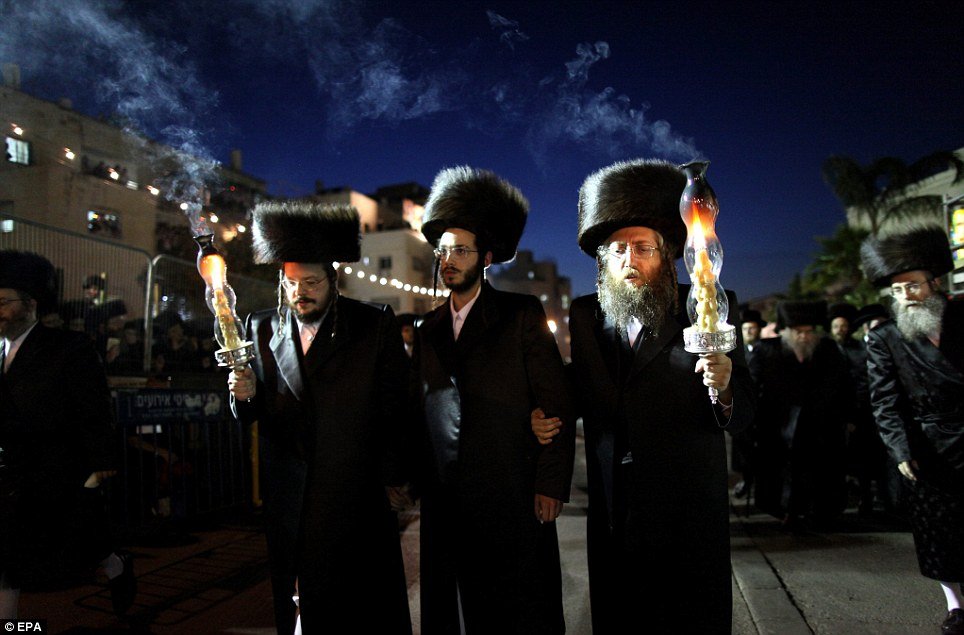
The founder of Hasidic Belz dynasty was Rabbi Shalom Rokeach, also known as the Sar Shalom, who was inducted as the rabbi of Belz in 1817. He personally helped build the city’s large and imposing synagogue which stood until the Nazis invaded Belz in late 1939.
When Rabbi Shalom died in 1855, his youngest son, Rabbi Yehoshua Rokeach, became the next Rebbe. The Belzer Hasidism sect grew in size during Rebbe Yehoshua’s tenure and the tenure of his son and successor, Rabbi Yissachar Dov Rokeach.
Unlike other groups which formed yeshivas in pre-war Poland, Belz maintained a unique yoshvim program, developed by Rabbi Yissachar Dov, which produced many outstanding Torah scholars. The yoshvim were married and unmarried men who remained in the synagogue all day to study the Talmud, pray, and derive inspiration from their Rebbe.
With the outbreak of World War II and the Nazi invasion of Poland in 1939, the town of Belz was thrown into turmoil. From 1939 to 1944 it was occupied by Nazi Germany as a part of the General Government.
Though the Germans attempted to destroy the Belz synagogue first by fire and then by dynamite, they were unsuccessful. Finally they conscripted Jewish men to take the building apart, brick by brick.
The Belz leader Rabbi Aharon Rokeach, known as the “Wonder Rebbe” was at the top of the Gestapo’s “wanted list” of rabbis targeted for extradition and extermination during the Nazi occupation of Poland.
With cash inflow from Belzer Hasidim in Palestine, England and the United States, the Rebbe and his half-brother, Rabbi Mordechai of Bilgoray, managed to stay one step ahead of the Nazis in one miraculous escape attempt after another. The brothers were driven out of occupied Poland and into Hungary by a Hungarian counter-intelligence agent who was friendly to Jews.

Although he had lost his entire family – including his wife, children, grandchildren and in-laws and their families – to the Nazis, Rebbe Aharon re-established his Hasidic court in Tel Aviv, where there was a small Hasidic community.
Both he and Rabbi Mordechai (who had lost his wife and daughter) remarried, but only Rabbi Mordechai had a child, Yissachar Dov Rokeach (II), in 1948. Rabbi Mordechai suddenly died a year later at the age of 47. Rebbe Aharon took his brother’s son under his wing to groom him as the future successor to the Belz dynasty.
Like nearly all of the other groups originating in Poland, Belzer Hasdism was nearly wiped out by the Holocaust. Some Hasidic followers from other communities joined Belz after the war and following the deaths of their rebbes. Belz, like Ger and Satmar, was comparatively fortunate in that its leadership remained intact and survived the war, as opposed to many other Hasidic groups which suffered losses both in terms of rank-and-file supporters, as well as the physical decapitation of their leaders.
Rebbe Aharon became an acknowledged leader of Haredi Judaism in Israel. He laid the groundwork for the spread of Belzer Hasidism through the establishment of schools and yeshivas in Tel Aviv, Bnei Brak and Jerusalem.
Since 1966, Rabbi Yissachar Dov Rokeach has presided over both the expansion of Belz educational institutions and the growth of Hasidic populations in Israel, the United States, and Europe. Under the Rebbe’s leadership, the Belz Hasidut has grown from a few hundred families at the time of his accession to leadership in 1966, to over 7,000 families as of 2011.
The largest number of Belzer Hasidim outside of Israel are living in the USA, mostly in the Borough Park neighborhood of Brooklyn, New York, which has eight Belzer synagogues and ten dayanim. Belz is the largest Hasidic community in Borough Park, followed by Bobov, Satmar, Munkatch, and Ger. Belz in the USA & Canada counts over 2000 families.